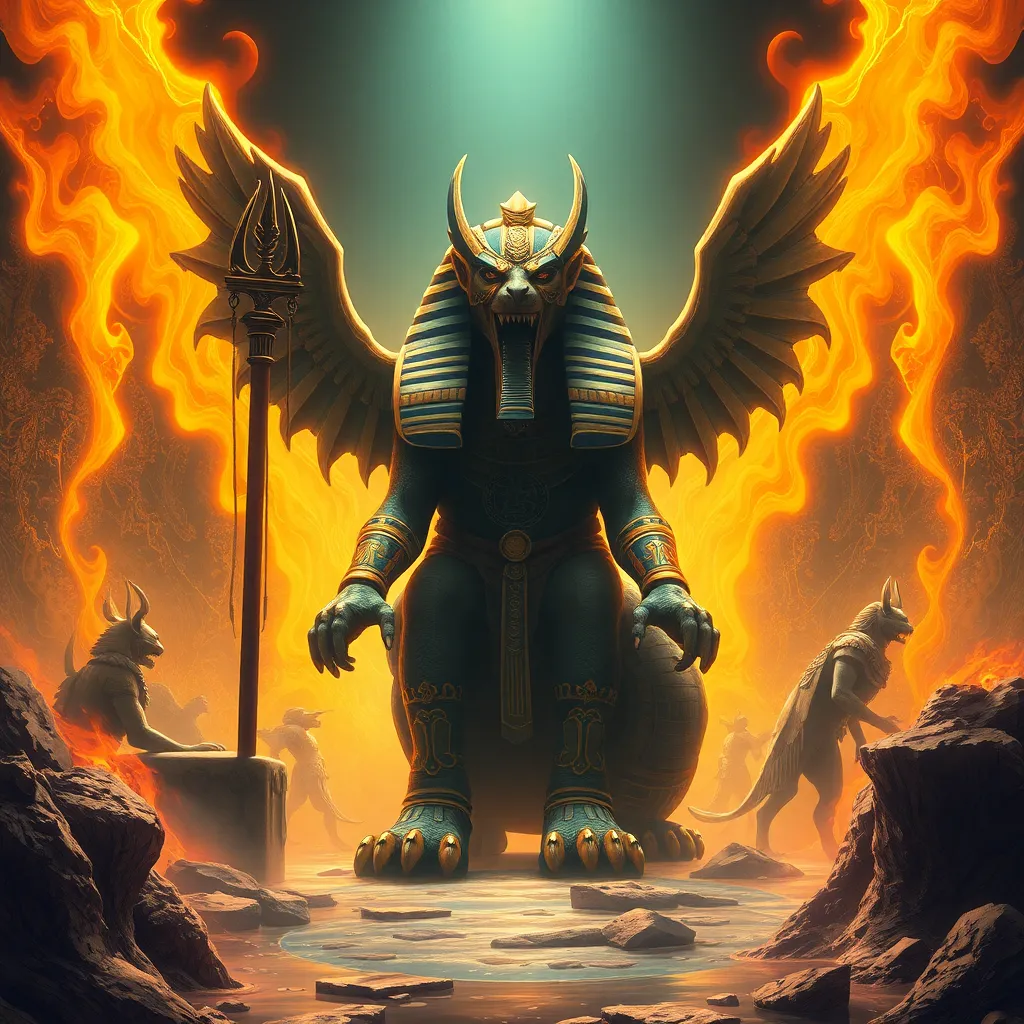Ammit: The Unforgiving Guardian of the Underworld
I. Introduction
In ancient Egyptian mythology, few figures evoke as much fear and reverence as Ammit, the devourer of souls. Known as the guardian of the underworld, Ammit plays a crucial role in the afterlife beliefs of the ancient Egyptians. This article explores the multifaceted character of Ammit, her historical significance, her physical depiction, and her role in the judgment of souls, as well as her relationships with other deities and her cultural impact.
II. Historical Context of Ammit
Ammit’s origins can be traced back to the early beliefs of ancient Egypt, where she was seen as a personification of divine retribution. Over time, her character evolved, reflecting the changing attitudes toward morality and the afterlife.
- Origins: Ammit is often depicted in texts and artifacts related to the afterlife, particularly in the Book of the Dead.
- Evolution: Initially portrayed as a more general symbol of death, her role became more defined as a guardian that consumed the hearts of the unworthy.
- Comparison: Unlike other mythological figures such as Osiris, who represents resurrection and salvation, Ammit embodies the finality of judgment.
III. The Physical Depiction of Ammit
Ammit is characterized by her hybrid form, which combines features of three fearsome creatures. This unique depiction carries significant symbolic meaning.
- Crocodile: Represents ferocity and the dangers of the Nile.
- Lion: Symbolizes strength and dominance, often associated with the sun god Ra.
- Hippopotamus: A fearsome creature, known for its aggressive nature, often seen as a guardian of the waters.
Artistic representations of Ammit can be found in various ancient artifacts and tomb paintings, illustrating her fearsome presence in the judgment process.
IV. Role in the Judgment of Souls
Ammit’s most significant role is her involvement in the judgment of souls, particularly during the weighing of the heart ceremony. This crucial event determines the fate of the deceased in the afterlife.
- Weighing of the Heart: The heart of the deceased is weighed against the feather of Ma’at, the embodiment of truth and justice.
- Function as the Devourer: If the heart is heavier than the feather, indicating a life of wrongdoing, Ammit devours the heart, condemning the soul to eternal oblivion.
- Significance of the Heart: The heart was considered the seat of intelligence and emotion, making it crucial in the judgment process, whereas the feather symbolizes purity and truth.
V. Ammit’s Relationship with Other Deities
Ammit’s character is intertwined with several key deities in ancient Egyptian mythology, each playing a role in the afterlife narrative.
- Connection to Osiris: As the god of the afterlife, Osiris oversees the judgment process, contrasting Ammit’s role as the enforcer of divine justice.
- Interaction with Anubis: Anubis, the god of embalming, prepares souls for judgment and guides them, ensuring they are ready to face Ammit.
- Role of Ma’at: Ma’at’s feather is central to the judgment, emphasizing the balance and truth that judges each soul against Ammit’s insatiable hunger.
VI. Cultural Impact and Legacy
Ammit’s presence extends beyond ancient texts, influencing various aspects of culture and modern interpretations.
- Ammit in Popular Culture: The figure of Ammit has appeared in films, literature, and video games, often symbolizing vengeance and judgment.
- Influence on Art: Artists continue to draw inspiration from Ammit’s fearsome visage, using her as a symbol of moral reckoning.
- Psychological Symbolism: In contemporary discussions, Ammit embodies the complexities of justice, morality, and the consequences of one’s actions.
VII. Myths and Stories Involving Ammit
Several myths prominently feature Ammit, each carrying its own moral lessons.
- Notable Myths: Stories often depict the dramatic moment of judgment, showcasing the fear and respect the ancient Egyptians held for Ammit.
- Lessons Derived: These tales often emphasize the importance of living a just life, as the consequences of wrongdoing are dire.
- Shaping Societal Values: Ammit’s role in judgment reinforced societal norms regarding morality, encouraging individuals to act in accordance with Ma’at.
VIII. Conclusion
Ammit remains a powerful symbol in ancient Egyptian mythology, embodying the unforgiving nature of justice in the afterlife. Her legacy continues to resonate in modern culture, reminding us of the moral values that transcend time. As we reflect on Ammit’s role as a guardian of the underworld, it becomes clear that her story is not just one of fear, but also of the profound implications of our choices and actions in life.




